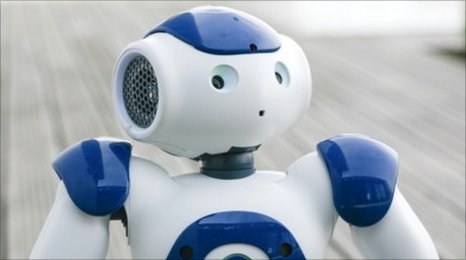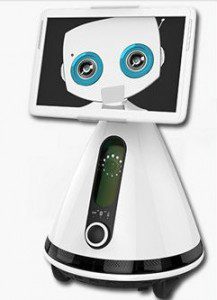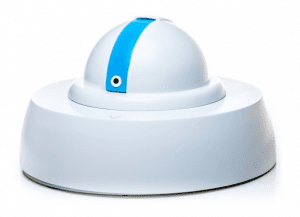Can Robots provide Social Care?
Every January the International Consumer Electronics Show in Las Vegas is a chance for the latest innovations in technology and gadgetry to be displayed. This year there were many highlights but more than ever before robots came into the limelight. Many companies have developed and honed their robotic developments into fully fledged prototypes and products ready for sale and simply waiting to be installed into homes around the globe. The robots developed for 2015 are a long way from the science fiction anthropomorphic droids from films and TV shows but they’re getting there and they’re certainly a long way from the old classroom Roamer robot too.
With so many fantastic innovations we thought it’d be worth looking at them from the perspective of health and social care and how they may be able to be used by disabled people for a range of purposes. Though none of the robots were that all-in-one house robot ready to serve and follow direct instructions, many of them can have a huge impact on daily life and make a different to the independence and capabilities of individuals with a wide range of disabilities. Below is a closer look at some of the key finds at CES 2015.
Furo-I Home
The highlight of CES 2015 and one of the ones to watch, despite its high price, was the exceptional Furo-I Home, developed by South Korean company Futurebot. In the shape of a cone and covered with sensors, Furo-I Home is topped with a tablet which displays a friendly droid-like face, ready to assist with your daily requirements.
Furo-I Home can be programmed to take control of internet-controlled devices in your home, meaning it can be used to switch lights on, heating on, music or television and it can also be used to provide reminders and guidance for children, elderly people and those who may need prompts to remember things such as their medication or to eat at set mealtimes. It’s the kind of development which could help individuals who sometimes require support workers as it can provide key reminders and also is a direct line to family and friends, as the droid can send messages asking for help or assistance. Expensive at £660 when it comes to market, it probably isn’t the droid for everyone but is a true example of how far robotics have come.
Branto Ball
The Branto Ball has been described as a cheaper alternative to the Furo-I Home and is currently the subject of a Kickstarter campaign hoping to ensure as many people as possible can enjoy all the benefits of their own Branto Ball. This smart little robotic ball is going to retail at around $399.
The Branto Ball is a small sphere-like robot which can be used to carry out a wide range of household tasks from the comfort of your smartphone, with remote access, whether you’re home or not. It can do anything from switching on the television, setting the lights and the heating and it can also be used a remote camera or monitor, to watch over children, pets and more.
The fact that it turns your smartphone into a remote means it makes settling down for the evening easier, especially for individuals who may live with chronic pain or mobility issues, as the additional strength or effort needed to switch off the heating, television and lights can be carried out with a single touch. This video explains more about the Branto Ball:
Budgee Bot
Budgee Bot is an extremely clever and extremely useful bot which could be used by many people living with a range of different conditions and disabilities. It’s designed to help ensure people who have difficulty with lifting heavy loads to have a robot companion to do it for them. It works through the owner wearing a transmitter and this connects to the robot, ensuring that it followers the owner around – meaning anything you need to hand can be carried with ease, without the stress of lifting and pulling.
This video introduces the Budgee Bot in more depth:
Specific Task Robots
As well as robots which can be used for a wide range of tasks, CES 2015 saw many single specific task robots on display, making many individual tasks easier to carry out and in some cases more enjoyable. Here is a closer look at some of those innovative inventions.
Droplet Robotic Sprinkler
We have talked many times about the garden aids available for disabled people and this is one seriously high tech addition for green-fingered growers. The Droplet Robotic Sprinkler has a modern, rounded design and works through a Wi-Fi connection which can be set to propel different amounts of water to different plants in the garden. Different plants needing different water levels can be accurately targeted and weather data can also be taken into account to delay watering when it isn’t required. Droplet allows you to enjoy your garden at leisure whilst limiting the labour that comes with it.
Grillbot
A niche robot which is ideal for summer parties and barbecues. If you regularly have the barbecue fired up in the summer months then the Grillbot will save you the hassle of all the cleaning afterwards. Using a specialised algorithm Grillbot cleans the barbecue and gets it back to its best, ready for your next use.
iRobot Innovations
iRobot were back at CES this year but rather than showing off their fantastic floor cleaning robots, including the Roombaand Scooba
, they were pushing forward the idea of drones in the home, with hints at the development of a robot butler! We still really rate the robot vacuum cleaners and believe they’re a true development in the right direction for independence in the home.
The Atomobot
A great creation for anybody living with allergies or breathing difficulties, the Atomobot is a mobile air purification system which roams around the home and hunts out airborne dust and odours and then removes them. A great way of keeping the home fresh but also a fantastic development for anyone who struggles with household allergies.
The All-In-One House Bot
The crowning glory of CES 2015 came from Meccano and the announcement of the Meccanoid. Marketed as a robot which can be built and programmed by children the genuine capabilities of Meccanoid are fascinating. It can be programmed to move in certain ways, playback voices and though it’s a long way from that original home bot who can be left cleaning the house and caring for the kids, just watching this video will show you a great example of what Meccanoid can do:
JustoCat: Robot Cats for Dementia Therapy
JustoCat is another modern innovation which has become a huge sensation and has been hailed as a truly effective and valuable therapy tool for people living with dementia and related conditions. JustoCat has been developed by academics in Sweden and has the prime purpose of providing comfort, peace and relaxation to people with dementia, as well as a sense of company to prevent or at least lessen loneliness. JustoCat purrs and meows just like a regular cat but at £1000 or thereabouts to buy, this cat is clearly a medical device and not simply a toy.
The JustoCat has been developed in partnership by robotics experts at the Robotdalen company and healthcare researchers and academics at Mälardalen University. The JustoCat has been released across Europe and the team behind the invention believe it is good enough to be prescribed by doctors to many people living with dementic and related conditions. The simple functions of JustoCat are to mimic the behaviour of a live cat but with the benefit of washable, removable fur so it’s completely safe and hygenic in care environments and institutions.
The team behind the JustoCat believe its simple function can promote interaction and communication in people who may struggle otherwise due to their condition and their research and tests back up this assertion. As well as being a valuable tool for people living with dementia, the experts also believe that JustoCat can provide be used as complimentary therapy for people with learning disabilities and its simply purpose is to provide an improvement in psychological, social and physical well-being.
It may look like a toy but JustoCat is far from it, with hopes that it will be available in the UK soon too. The benefits for people living with dementia, a condition which is significantly on the rise, have been studied and JustoCat can make a real difference – it just simply needs to be made available. The latest figures from the Alzheimer’s Society predict that by the end of this year, over 850,000 people will be living with a form of dementia so more focus on technology which can help is an absolute must. If JustoCat makes a difference then it should be made available. This video shows exactly how it works:
Robots and Social Care
It still seems to be in a very distant future that we can trust robots to be responsible wholly or even partially for social care but there are so many helpful and useful developments that disabled people are gaining access to things, even in their own homes, which may have been difficult before. Little things like the self-watering garden and the one-switch for all via our smartphones can take the stress out of daily life so significantly that they are something to truly applaud. Perhaps alongside telecare services similar to skype or facetime helping to fill the gap with the human interactive side of care.
With the innovations launched at CES 2015 it’ll be exciting to see what happens in 2016!






